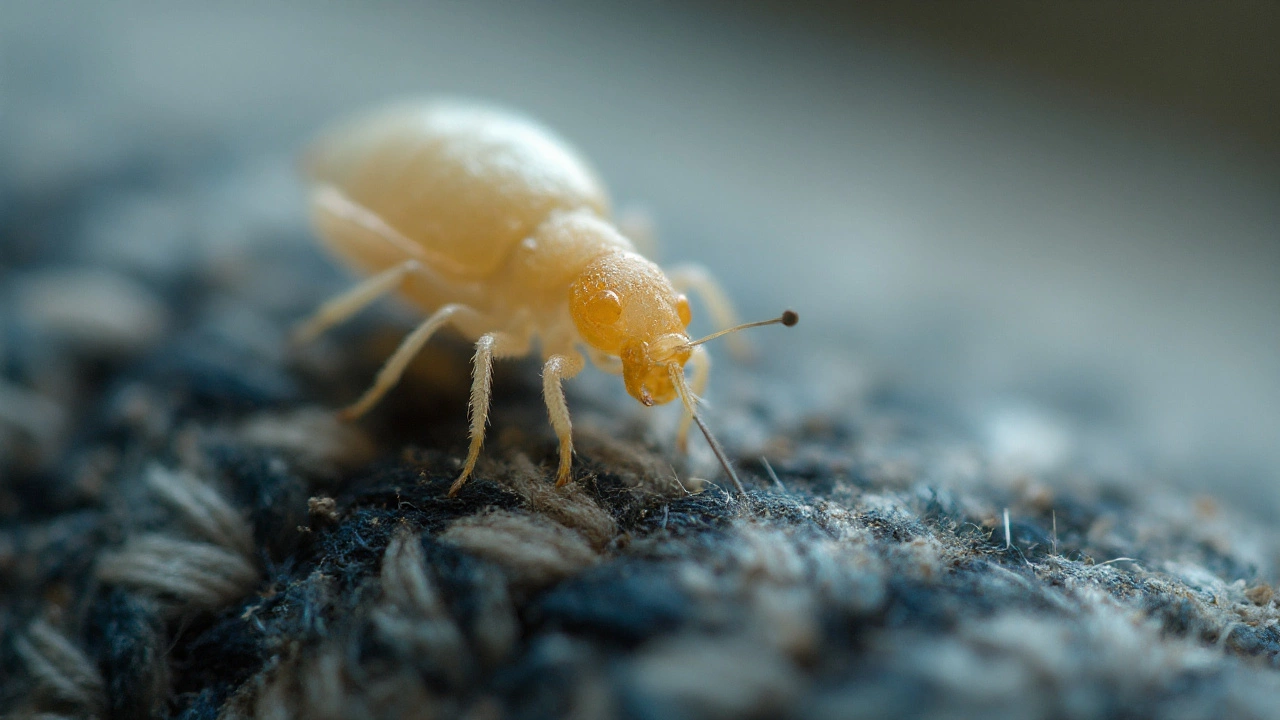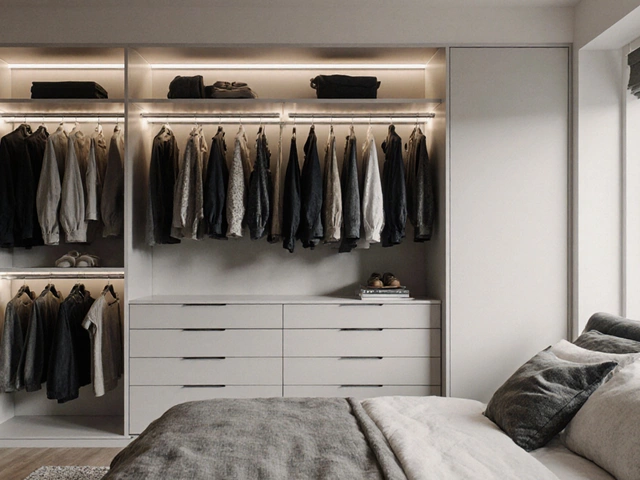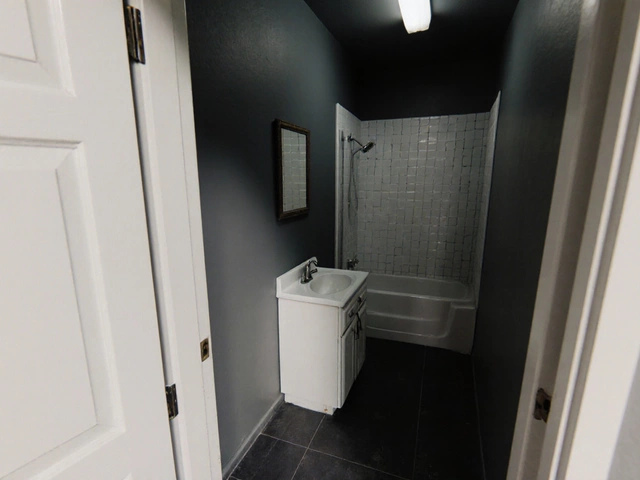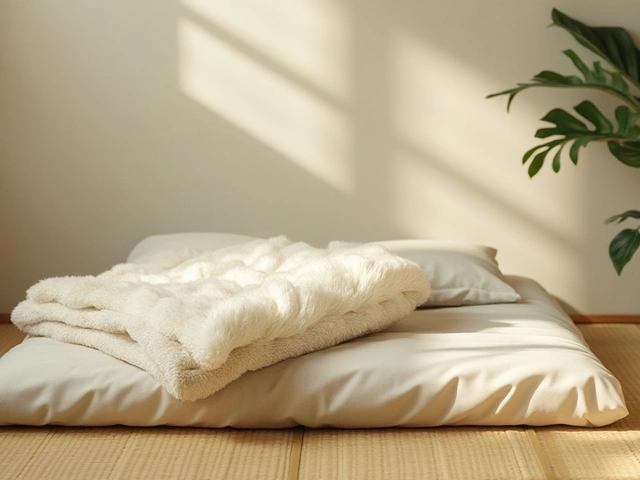You want a straight answer: what do furniture mites look like, and can you actually see them? Here’s the catch-most mites people worry about in couches and beds are either too small to see clearly or get mistaken for other pests. If you’re squinting at a tiny speck on your sofa, you might be dealing with dust, a flea, a carpet beetle larva, or (less often) a true mite like a bird or mold mite. I’ll show you what’s visible, what isn’t, and how to confirm it without guessing.
Quick expectations check before we start: dust mites-the ones tied to allergies-are almost never visible to the naked eye. If you’re seeing fast little dots that feel like they’re biting, that’s usually not dust mites. It’s more likely bird/rodent mites or fleas. Lucky for you, both have a look and a behavior you can pick out with a flashlight and a cheap hand lens.
- TL;DR
- Most “furniture mites” people talk about are dust mites (microscopic, translucent; you won’t see them). If you can see a moving speck, think bird mites, mold mites, fleas, or tiny beetles instead.
- Dust mites: 0.2-0.3 mm, pale/clear, potato-shaped under magnification; seen best at 20-40×. They don’t bite.
- Bird/rodent mites: 0.5-1 mm, gray to almost black after feeding; fast walkers; can bite humans when their animal host is gone.
- Mold mites: tiny white grains with a faint “sparkle” from body hairs in bright light; cluster in damp, musty spots.
- Use a white card test, clear tape lifts, and a 10×-20× loupe to tell mites from fleas, bed bugs, booklice, and carpet beetle larvae.
What they actually look like (and what they get confused with)
First, a reality check: there isn’t a single species called a “furniture mite.” People use the phrase for a few different mites that happen to show up in or on furniture. The big three in homes:
- House dust mites (Dermatophagoides spp.)-drive allergies, live in mattresses, fabric, and dust.
- Bird/rodent mites (Ornithonyssus/Dermanyssus spp.)-follow birds or rodents indoors and will bite people when the animal host is gone.
- Mold/storage mites (Tyrophagus spp.)-thrive in damp, moldy spots or stored foods; sometimes wander onto furniture.
How they look, in plain language:
Dust mites: you won’t reliably see them without magnification. They’re about 0.2-0.3 mm long, pale to translucent, with a soft, rounded body like a tiny potato and short legs. Under a microscope (20-40×), they look like tiny, slow-moving translucent blobs with eight legs (six if it’s a larva). They don’t jump. They don’t bite. The American Academy of Allergy, Asthma & Immunology notes dust mites trigger allergies through droppings and body fragments, not by biting.
Bird/rodent mites: these are the “I can see a dot that’s biting me” mites. Adults run about 0.5-1 mm. Empty they look grayish or clear; after feeding on blood, they turn darker, even reddish. They move fast-faster than a bed bug nymph-and don’t jump. You might notice them on light-colored walls, near couches under a ceiling with a roofline, or along window frames if birds or rodents nested nearby. University extension fact sheets describe them as oval, quick, and very small, often visible as moving specks against white surfaces.
Mold/storage mites: these look like white, slow pinpoints. Under strong light, they can “sparkle” because of fine body hairs. They cluster in humid areas with a mild moldy smell: under cushions of a damp couch, on the back of particleboard furniture in a humid room, near houseplants with soggy soil, or around stored foods. They don’t bite. If you run a finger across, they smudge like fine flour.
How they move, in a nutshell:
- Dust mites: crawl slowly; invisible without magnification.
- Bird/rodent mites: walk briskly in straight or meandering lines; no jumping.
- Mold mites: drift or crawl slowly in clusters; look powdery in groups.
Now, the look-alikes people mix up with mites:
- Bed bugs: apple-seed shape, flat, reddish-brown, 1-7 mm depending on age. Visible, slow walkers, hide in seams and tufts. You’ll see fecal spots (inky dots) and shed skins. Not tiny white grains-so if you see white powdery specks moving, that’s not bed bugs.
- Fleas: 1.5-3.3 mm, laterally flat, dark, very fast, and they jump. If it jumps, it’s not a mite.
- Carpet beetle larvae: 3-5 mm, fuzzy or bristly little caterpillars, brown, with distinct hairs that can irritate skin. They don’t run fast; they don’t bite. Shed skins look like empty husks.
- Booklice (psocids): 1-2 mm, pale, soft-bodied, with long antennae. They don’t bite. Often found in humid spots, on stored papers or cardboard.
- Springtails: 1-3 mm, gray/black/white, and they “flick” or hop using a tail. If it hops, it isn’t a mite.
Use a simple rule when you’re looking by eye:
- Jumping = flea or springtail (not a mite).
- Flat, reddish, apple-seed shape = bed bug.
- Fuzzy/bristly with striped hairs = carpet beetle larva.
- Tiny fast dot that bites = likely bird/rodent mite (check for nests).
- Powdery white grains in damp areas = mold mites.
- Nothing visible, but allergy symptoms and dust in fabrics = dust mites.
Sizes, colors, and best places to spot them at a glance:
| Pest | Size (mm) | Visible? | Color/Look | Movement | Common Spots | Bites? |
|---|---|---|---|---|---|---|
| Dust mites | 0.2-0.3 | Not to naked eye | Translucent, rounded | Slow crawl (seen at 20-40×) | Mattress, cushions, fabric dust | No (allergen, not biter) |
| Bird/rodent mites | 0.5-1.0 | Yes (tiny specks) | Gray to dark; darker after feeding | Fast crawl, no jump | Sofas under nests, walls, windows | Yes |
| Mold/storage mites | 0.3-0.5 | Barely (white grains) | White, slight “sparkle” hairs | Slow, cluster | Damp furniture, musty areas | No |
| Fleas (look-alike) | 1.5-3.3 | Yes | Dark, flat side-to-side | Jumps | Pet areas, rugs, sofas | Yes |
| Bed bugs (look-alike) | 1-7 | Yes | Flat, apple-seed | Slow crawl | Mattress seams, couch tufts | Yes |
| Carpet beetle larvae (look-alike) | 3-5 | Yes | Brown, fuzzy/bristly | Slow | Under cushions, closets | No (hairs irritate) |
Note on eyesight: a human hair is about 0.07-0.1 mm wide. Dust mites are only two to three hairs long. Without magnification and good lighting, you’re not going to pick them out in a couch seam.
Credible sources back this up: EPA guidance states dust mites are microscopic and best managed by allergen reduction; AAAAI confirms they don’t bite; university entomology programs (e.g., Florida, Texas A&M) describe bird mites as fast, 0.5-1 mm specks that may bite people after birds leave a nest. Journal of Medical Entomology papers list those size ranges and behaviors.
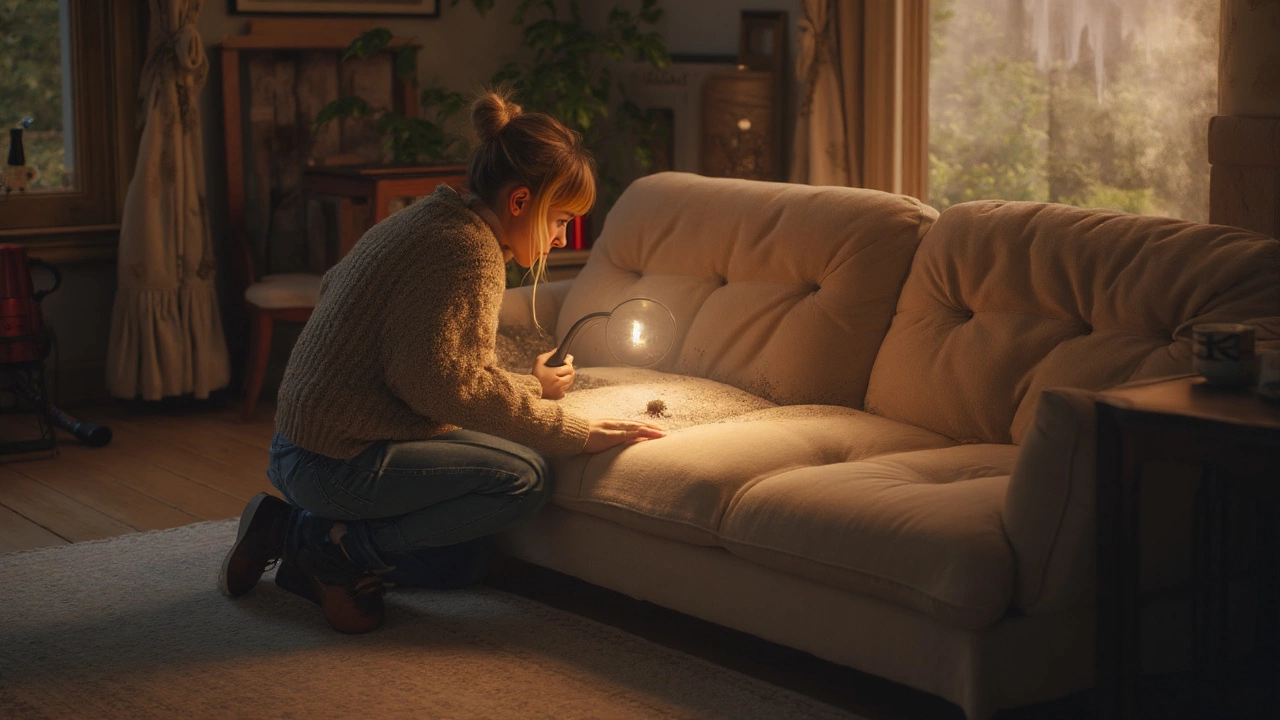
Step-by-step: inspect and confirm what you’re seeing
You don’t need lab gear to get strong clues. A flashlight, white paper, tape, and a cheap hand lens go a long way.
- Gather tools
- Bright flashlight or phone light.
- White index cards or printer paper.
- Clear tape or a lint roller.
- 10×-20× hand lens (cheap jeweler’s loupe) or a smartphone macro clip.
- Zip bags to save samples.
- Do a white card drag
- Press a white card into couch seams, under cushions, along the base, and on headboard seams. Tap. Watch for moving specks for 60 seconds under bright light. Note color, speed, and whether they jump.
- Use the tape-lift method
- Touch clear tape to areas with activity and seal it onto another white card. Label the location. Look with the loupe. Count legs if you can: adult mites have eight legs; larvae have six. Insects like fleas have six legs and a clear body shape.
- Check the patterns
- If you see fast gray/black specks on walls near a couch, especially in spring/early summer, scan for a bird’s nest outside near that wall, a soffit gap, or a vent. Rodent activity in attics or wall voids can also lead to rodent mites roaming rooms.
- If you see powdery white specks in damp zones (basement couch, humid room), and there’s a musty smell, think mold mites. Wipe the area: if it smears like flour paste, that fits.
- If there’s nothing visible, but you sneeze or itch on that couch and the room is dusty or humid, dust mites and fibers are the likely trigger.
- Differentiate from look-alikes fast
- Jumping = flea or springtail-time to check pets and rugs.
- Flat, oval, brown, apple-seed look with inky fecal dots = bed bugs.
- Fuzzy “little caterpillar” with bristles = carpet beetle larva. Look for shed skins.
- Long antennae and soft pale body = booklouse (harmless; reduce humidity).
- Confirm if needed
- Use the loupe to look for eight legs on a tiny, rounded body. Take a clear phone photo through the loupe if you can.
- Still unsure? Save the tape/card in a bag and reach out to a local university extension or a licensed pest professional who offers ID. Many extensions will ID pests from photos or mailed samples.
Heuristics that save time:
- If you can see it easily and it bites, dust mites are off the table. Focus on bird/rodent mites or fleas.
- If it’s white and powdery in a damp room, dry the room first. If activity fades as humidity drops, mold mites were the problem.
- If you’re seeing activity only on upholstery and not on walls or ceilings, and you own pets, screen for fleas and carpet beetles.
Red flags that point to bird/rodent mites:
- Bites happen day or night, small red welts, often clustered on arms/neck while on the couch.
- Specks seen on light walls or window frames near exterior eaves or vents.
- Recent bird nest on the house, or evidence of rodents in the attic or crawlspace.
Red flags that point to dust mites and allergens:
- Itchy eyes, sneezing, stuffy nose on the couch, worse when vacuuming or fluffing pillows.
- No visible bugs, but lots of settled dust, high humidity, and old cushions or dense fabrics.
Want a quick lens test? At 10× magnification: dust mites look like clear jelly beans with legs. Bird mites are darker dots with clearer segmentation and quicker movement. Fleas still look like dark footballs that zip and jump off frame.
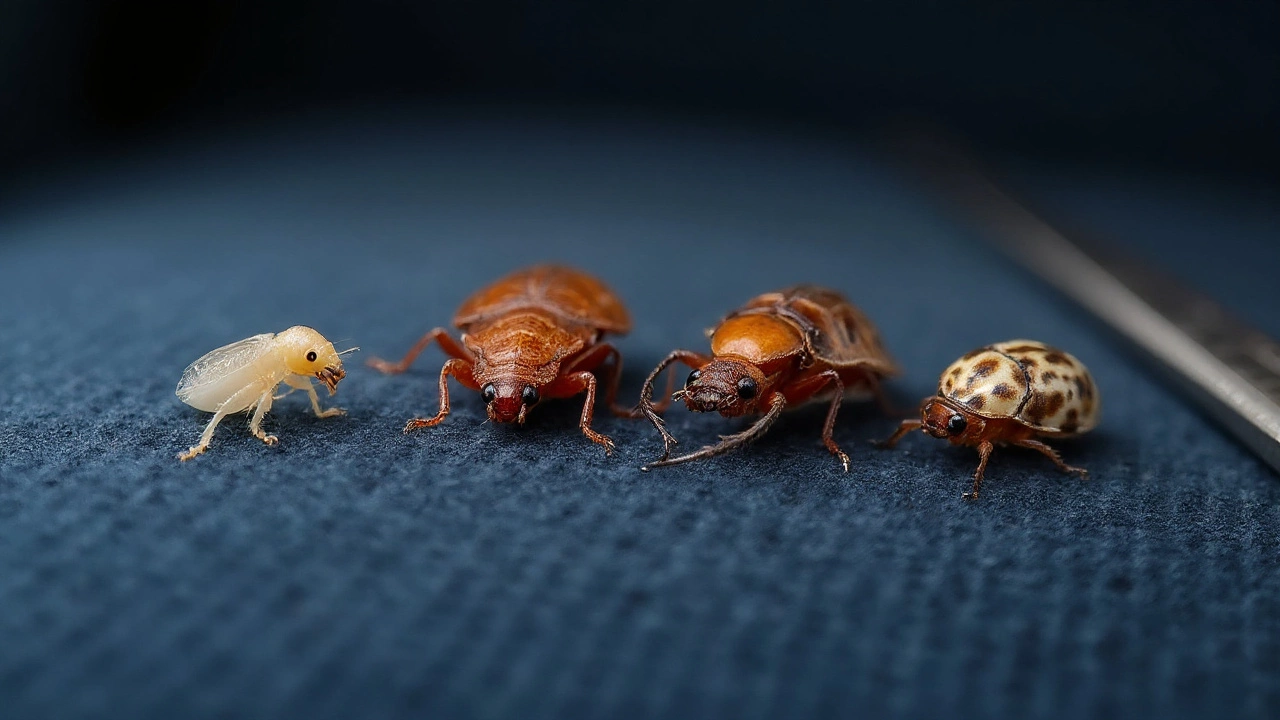
What to do next: fixes, prevention, and quick answers
Pick the path that matches what you found. You don’t have to bomb the whole house-target the cause and the habitat.
If you confirmed or strongly suspect dust mites (allergy problem, not biting):
- Wash and heat: Wash removable covers, throws, and pillowcases weekly in hot water at least 130°F/54°C. Dry on high heat.
- Encase and upgrade: Use allergen-proof encasements for pillows and mattresses. Swap feather/down for synthetic fills you can wash hot.
- Vacuum right: Use a HEPA-filter vacuum on upholstery and floors 1-2× per week. Go slow, two passes. Empty the canister outside.
- Humidity control: Keep indoor relative humidity under 50%. A dehumidifier in humid rooms makes a big difference; dust mites crash below 50%.
- Steam and heat: Steam upholstery (above 212°F/100°C) to kill mites on contact. Let it dry thoroughly.
- Filters and airflow: Run a HEPA air purifier in the room where you spend the most time. Clean or replace HVAC filters on schedule.
Why this works: EPA and allergy guidelines focus on allergen reduction. You’re not trying to “see and kill every mite.” You’re lowering the population and removing the allergen (droppings, body parts) that cause symptoms.
If you confirmed or strongly suspect bird/rodent mites (visible, fast, biting):
- Remove the source: Find and remove bird nests or solve the rodent issue. Seal entry points. This is the key step; without the host, mites die out.
- Targeted treatment: Lightly dust cracks/crevices near the couch and baseboards with a desiccant like silica aerogel or diatomaceous earth labeled for indoor use. Avoid overapplying-thin, barely visible films work best. Do not puff dust onto seating surfaces.
- Vacuum and launder: Bag and launder throws and removable covers on hot. Vacuum the sofa seams and under it, then dispose of the bag or clean the canister outside.
- Heat small items: Place small cushions in a hot dryer for 30 minutes if safe for the fabric.
- Monitor: Set out a few sticky traps near the sofa legs and along the wall base to see if activity drops over 1-2 weeks after the nest/rodent fix.
- Call a pro if needed: If you can’t locate the source, or bites continue for more than two weeks after removing nests, bring in a licensed pest professional. They can inspect soffits, attics, and wall voids.
If you confirmed or strongly suspect mold/storage mites (white specks in damp zones):
- Dry it out: Bring humidity under 50% with a dehumidifier and airflow. Fix leaks, improve ventilation.
- Clean surfaces: Wipe hard furniture backs and undersides with a mild detergent solution. For porous wood that’s musty, clean and dry thoroughly; in bad cases, consider sealing or replacing affected panels.
- Remove mold food: Get rid of damp cardboard, old papers, and spoiled stored foods. Keep houseplants on a watering schedule that lets soil dry between waterings.
- Re-check in a week: If humidity stays low, activity usually fades fast.
Simple decision tree you can remember:
- Do they jump? Yes → fleas/springtails. No → go on.
- Are they big enough to see clearly (>1 mm), flat and reddish? Yes → bed bugs. No → go on.
- Tiny fast specks, biting? Yes → bird/rodent mites. No → go on.
- Powdery white in damp area? Yes → mold mites. No and nothing visible, but allergies → dust mites.
Pro tips from field work:
- Inspect above the couch, not just the couch. Bird mites often come down from ceilings or walls, tracing light toward windows.
- White pillowcases are great monitors. If you’re seeing roaming specks, you’ll often spot them on white fabric first.
- Use a cheap jeweler’s loupe. It’s the fastest way to stop guessing. Practice by looking at sugar grains and fibers first so your eyes learn the scale.
Mini-FAQ
- Can you see dust mites with your eyes? Not reliably. They’re around 0.2-0.3 mm and translucent. You need 20-40× magnification to see them clearly.
- Do dust mites bite? No. If you’re getting bites on furniture, think bird/rodent mites, fleas, or bed bugs. Allergy itch from dust mites is from proteins in droppings and carcasses, not bites.
- Can bird mites live in a couch? They can wander across and hide in seams, but they need a bird or rodent host to sustain a population. Remove the nest/rodents and clean; activity usually drops off within days to a couple of weeks.
- What about leather sofas? Same rules. Mites won’t feed on leather. Seams and the fabric underneath can still harbor dust, fleas, or roaming mites.
- Will essential oils fix this? Oils may repel or kill some pests on contact, but they won’t solve a nest in your soffit or lower humidity. Use source control first. Be careful with oils around pets and kids.
- Can I identify mites from a phone photo? Sometimes, if you shoot through a 10× macro lens and capture leg count and body shape. Many extensions will attempt ID from clear photos.
- Do I need foggers? No. Foggers don’t reach where mites hide and can make rooms messy and unsafe. Target the source and habitat.
Checklist: quick inspection in 10 minutes
- Flashlight sweep: couch seams, under cushions, underside of frame.
- White card tap: check for moving specks.
- Tape lift: save a sample.
- Wall/window scan: look for specks on light walls near the couch.
- Roofline/vent check: any nests outside near that wall? Any droppings or noise in the attic?
- Humidity reading: is the room over 50%? Any musty odor?
When to call a pro
- You’ve got confirmed bites and see fast-moving specks, but can’t find the source.
- You found a bird nest you can’t safely remove, or you suspect rodent activity in a wall or attic.
- Bed bug signs (stains, shells) show up in the couch or bed.
Health notes and credible guidance:
- Allergies: Dust mite allergens are a leading indoor trigger (AAAAI practice parameters). Controlling humidity, encasing bedding, and hot washing are first-line steps.
- Bites: Bird/rodent mites can bite and cause itch and rashes, but they don’t live on people long-term. Focus on removing the animal host and sealing entry points.
- Pesticides: EPA guidance stresses targeted use. For mites that bite, source removal plus light desiccant dust in cracks beats broad fogging.
Troubleshooting different scenarios
- I see tiny dark dots on the wall near my couch, mostly in the afternoon sun. Likely bird mites following light. Check for nests outside above that wall; seal eaves/soffits and remove the nest. Place sticky traps along the baseboard to confirm activity drops after removal.
- I feel itchy on the sofa but never see anything. Check humidity and dust level. Wash throws and covers hot, HEPA vacuum the sofa, run a purifier, and keep humidity under 50%. If symptoms ease, dust mites/allergens were the issue.
- My pet scratches on the couch and I see jumping specks. That’s fleas. Treat the pet with a vet-approved product, wash textiles, and vacuum daily for a week. Consider a targeted insect growth regulator for carpets per label.
- I found white, glittery dust under the cushions in a basement family room. That “glitter” is a classic mold mite sign. Dry the room, clean surfaces, and re-check in a week.
A quick note on tools
- Loupes: A 10×-20× jeweler’s loupe costs little and makes tiny ID work possible.
- Sticky monitors: Place a few under sofa legs and near the baseboard. Check every day for a week.
- Dehumidifier: Keep a simple hygrometer in the room. Under 50% RH is the goal.
If you remember nothing else, remember this: if you can see a tiny bug on your couch, it probably isn’t a dust mite. Use motion (jump vs. fast crawl), shape (seed vs. dot vs. fuzzy larva), and humidity clues to sort it out fast. Then fix the source and the habitat. That’s how you stop the cycle without chasing ghosts.
